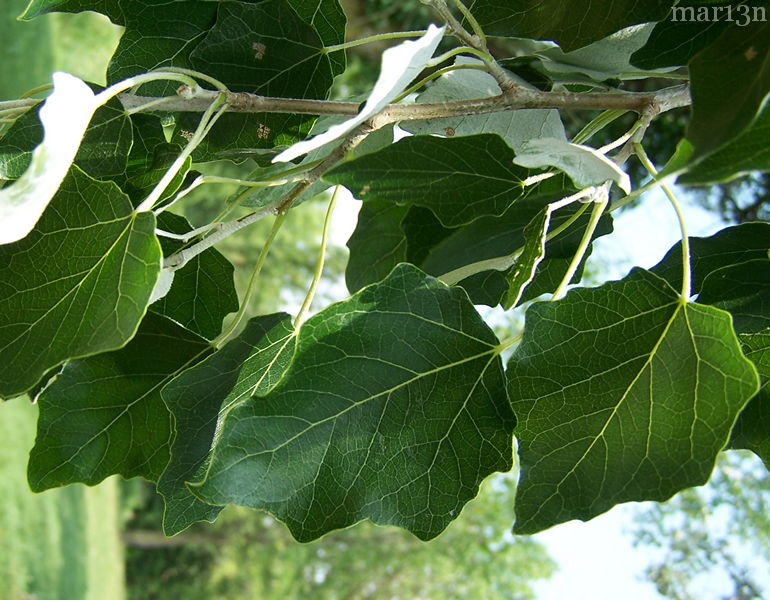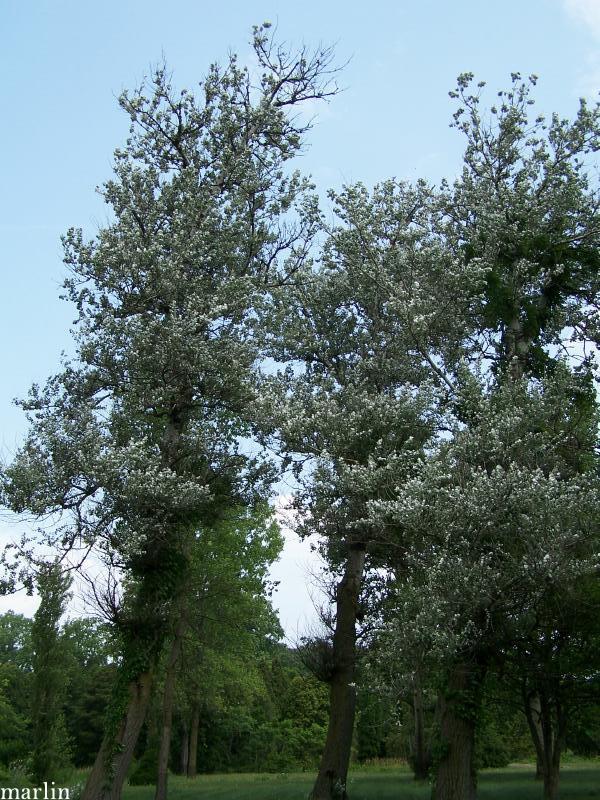 |
White Poplar – Populus alba Family Salicaceae – Willow, Cottonwood, Aspen Also commonly called silver poplar, this tree's shimmering leaves make an attractive display. |
Custom Search
|
 |
|
Poplars have wind-pollinated catkins and leaves whose broad blades have long petioles which may be flattened at one end. Their shoots bear terminal buds, and all their buds have overlapping scales. Hybrids grow more vigorously and provide better timber than their parents. Dark green, glossy poplar leaves toss in the slightest breeze, revealing silvery-white undersides. |
 These white poplars are 80 feet tall, with 2-foot diameter trunks. White Poplars are native to Europe, Asia, and North Africa; they were introduced to North America during colonial times. They grow rapidly and spread readily by root sprouts – so readily they often become undesirable as weeds. Along with Quaking Aspen, white poplar belongs to a group of poplars with smooth barks and coarsely serrate leaves.
The Willow family of trees (Salicaceae) has 350 or so species of willows and poplars, which are mainly natives of the Northern Hemisphere. The one uniting feature of all Salicaceaes is their flowers; they have neither petals nor sepals but are borne in catkins that usually appear with or before the tree's new leaves. Both willows and poplars prefer moist sites and hybridize so easily identification is sometimes difficult. These trees were growing along the banks of a small creek, along with various willows.
White Poplar bark is whitish-grey and smooth above, becoming rough and furrowed at base |
| References: 1. USDA NRCS Plant Materials Program,"White Poplar" 2. NATIONAL AUDUBON SOCIETY, National Audubon Society Field Guide to North American Trees |
| Tree Encyclopedia / North American Insects & Spiders is dedicated to providing scientific and educational resources for our users through use of large images and macro photographs of flora and fauna. |
 |
Family Salicaceae — Willow, Cottonwood, Aspen There are only two genera in this family, Salix (willows), with about 300 species, and Populus (poplars), with barely 40 species. Salicaceae are found throughout the temperate parts of the world, with the majority of species occurring in the north; both willows and poplars have a strong affinity for water. Tree Encyclopedia | Tree Index | Walnuts, Hickories, Butternut, Pecan |

